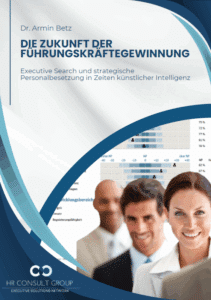The fact that companies must have a compliance management system is largely undisputed today. The decisive question in this context is the type and scope of the compliance function.
In principle, the objectives of a compliance function in a company are clearly defined: on the one hand, compliance violations (from within the company) should be prevented in order to avert damage (material damage and reputational damage) to the company. On the other hand, the compliance function should also minimize, if not prevent, the management's personal liability under criminal and civil law.
Since the topic of compliance has attracted a great deal of media attention and numerous corporate scandals have increasingly attracted the attention of an increasingly critical public, the issue of setting up and implementing compliance management systems (CMS) is also being discussed in circles that previously did not feel addressed.
Risk landscape and risk strategy
In every company - regardless of industry, products and business model - there are risks that can materialize and cause damage to the company. In the course of globalization and internationalization, regulatory requirements have increased. Some sectors are particularly affected. One example is the energy industry, which has to contend with a flood of new laws in connection with significant market changes. However, the regulatory frenzy within companies, especially in corporate groups, is also constantly increasing, meaning that more and more internal guidelines need to be observed.
As the number of regulations increases, so does the risk of unknowinglyviolating legal, normative and internal requirements. Intentional violations remain unaffected by this.
Not every risk has critical or existential consequences if it materializes. Against this backdrop, determining the risk landscape and risk strategy is an essential basis for the future development of the compliance management system. The first step is to identify the risks; this results in the risk landscape (which risks exist in which business context). The second step involves assessing the risks, quantifying potential damage and estimating the probability of occurrence. In a third step, the risks are prioritized and assigned to a strategic approach (a distinction is usually made in the risk strategy between risk avoidance, risk minimization, risk transfer and risk assumption). Low risks are often borne by the company itself, while risks with high losses are transferred to third parties (e.g. insurance). In the case of non-transferable risks, the company attempts to minimize or even avoid them by taking appropriate measures.
Obligation to establish a compliance function
Every manager is well advised to protect their company - and themselves - against risks arising from compliance violations. This is usually done through a specific risk management system (CMS). But to what extent is there an obligation to set up such a compliance function?
The opinion on this is anything but uniform. There are only explicit legal obligations in individual cases, such as Section 33 WpHG[1] and Section 25a KWG[2]. These provisions explicitly require the introduction of compliance functions, whereby companies that provide investment services or financial services are affected.
Proponents assume that there is a general obligation to introduce a compliance function. This arises from a holistic view of existing legal provisions such as Sections 76, 91 II, 93 I AktG and Sections 35, 41, 43, 85 GmbHG (legally standardized management function of the management)[3].
An obligation to introduce a compliance function can also be derived from the provisions of the OWiG (Sections 3, 9, 130 OWiG)[4].
Finally, the German Corporate Governance Code (GCGC) requires the Management Board to ensure compliance with the statutory provisions and the company's internal guidelines and to work towards their observance by the Group companies[5].
Critics do not share this opinion. The main argument is that - with the exception of the aforementioned provisions of the WpHG and KWG as well as the supplementary provision of Section 64a VAG[6] - there are no explicit statutory regulations. If the legislator had wanted compliance functions to be mandatory in whatever form, it would have included this in the relevant statutory provisions.
The interpretation of the AktG and GmbHG as implying an obligation to implement a compliance function is also considered excessive.
Finally, the GCGC is also rejected as a legal basis, as it has the character of a recommendation and is therefore not legally binding. Furthermore, it only applies to listed stock corporations and therefore does not take into account any other companies.
All of the above arguments are correct and justified. Nevertheless, they lose their impact when faced with the question of whether members of management want to expose themselves to the risk of civil and criminal liability due to a lack of compliance management.
The compliance management system must fit the company
The first thing to say on this question is simple: there are no specific legal or normative requirements for a compliance management system. In this respect, every company management is basically free to choose the functional and organizational structures for the compliance function in their company. Regardless of this, there are a number of aspects that are helpful to consider when setting up the CMS and that can have - direct and indirect - implications for the design of the CMS. After all, such a function ties up human and material resources and therefore represents a not insignificant cost factor.
The compliance function can only have the desired effect if it is integrated into the overall company organization as a management system. It is therefore important to install a system that is suitable for the respective company. This requires at least
- Personnel assignment
The topic of compliance must be assigned to personnel, i.e. individual persons must be given responsibility for it. In small companies, this can be done in conjunction with other functions (e.g. controlling), while large companies employ their own compliance officers for this purpose. Outsourcing to a specialized consultant is also conceivable. - Organizational anchoring
The compliance function must be organizationally anchored in the company. This aspect also depends on the size and structure of the company: from a staff unit to a separate compliance department, all variants are represented in practice. Regardless of how it is anchored in the organization, it is important that the compliance function is not an isolated solution. It is essential to ensure that there is close integration with other management systems (quality management, risk management, etc.). - Definition of tasks
The definition of the tasks of the compliance function has two dimensions. Firstly, the specific operational tasks must be described (e.g. advising the management and other departments in the company, developing and implementing internal regulations, training employees and monitoring and detecting compliance violations). On the other hand, care must be taken to ensure that the tasks of the compliance function are suitable for ensuring the fulfilment of the duties of the company management (organizational, control and investigation duties) - after all, this involves the delegation of supervisory tasks and the relevant interplay between the act of delegation, selection decision and monitoring of the delegatee in this context. - Monitoring, control and reporting
A compliance function requires monitoring and control. This is usually done by means of a reporting system, the extended scope of which also includes the performance of internal and external audits.
The CMS must be individually tailored to the company, taking into account its specific requirements and concerns as well as its individual risk landscape. In this respect, it is essential to carry out a careful analysis of the key parameters before setting up or expanding a CMS.
[1] In Section 33 of the German Securities Trading Act (WpHG), the legislator has imposed special organizational obligations on securities trading companies (establishment of an independent compliance function)
[2] Section 25a KWG (German Banking Act): An institution must have a proper business organization that ensures compliance with the legal provisions to be observed by the institution and the business necessities (excerpt)
[3] Section 91 (2) AktG (German Stock Corporation Act), for example, stipulates that the Management Board must take appropriate measures, in particular set up a monitoring system. The same applies to the GmbH.
[4] According to Section 9 OWiG (Administrative Offenses Act), the "ownership" of the company within the meaning of the OWiG is attributed to the persons acting directly. In practice, therefore, liability for organizational fault under the OWiG does not apply to the company itself, but to the management level.
[5] No. 4.1.3 GCGC (German Corporate Governance Code)
[6] Section 64 VAG (Insurance Supervision Act) is irrelevant here
The 2nd blog post will deal with corporate practice and the resulting requirements.
About the author

Eckart Achauer, studied law and business administration, postgraduate Master of Business Administration (MBA). In-service training as European Quality Manager (DGQ), mediator specializing in business mediation and Certified Compliance Manager (TÜV).
He worked for around 10 years in the international insurance industry in the management of a Swiss insurance group in various functions (claims department, sales, assistance) before moving into management and business consulting in 1997.
As a consultant and managing director of various consulting companies, Mr. Achauer has specialized in organizational and process optimization as well as in the development and implementation of management systems - quality management, risk and compliance management.
At Senator Executive Search Partners, Mr. Achauer is responsible for compliance management. As part of compliance audits, he analyses their organizational "compliance fitness", raises awareness and trains management, executives and employees and supports companies in setting up and implementing individual compliance management systems. In doing so, he always takes into account the specific risk situation of the company. Thanks to his many years of experience as a manager and consultant, he is very familiar with the business challenges faced in practice.




